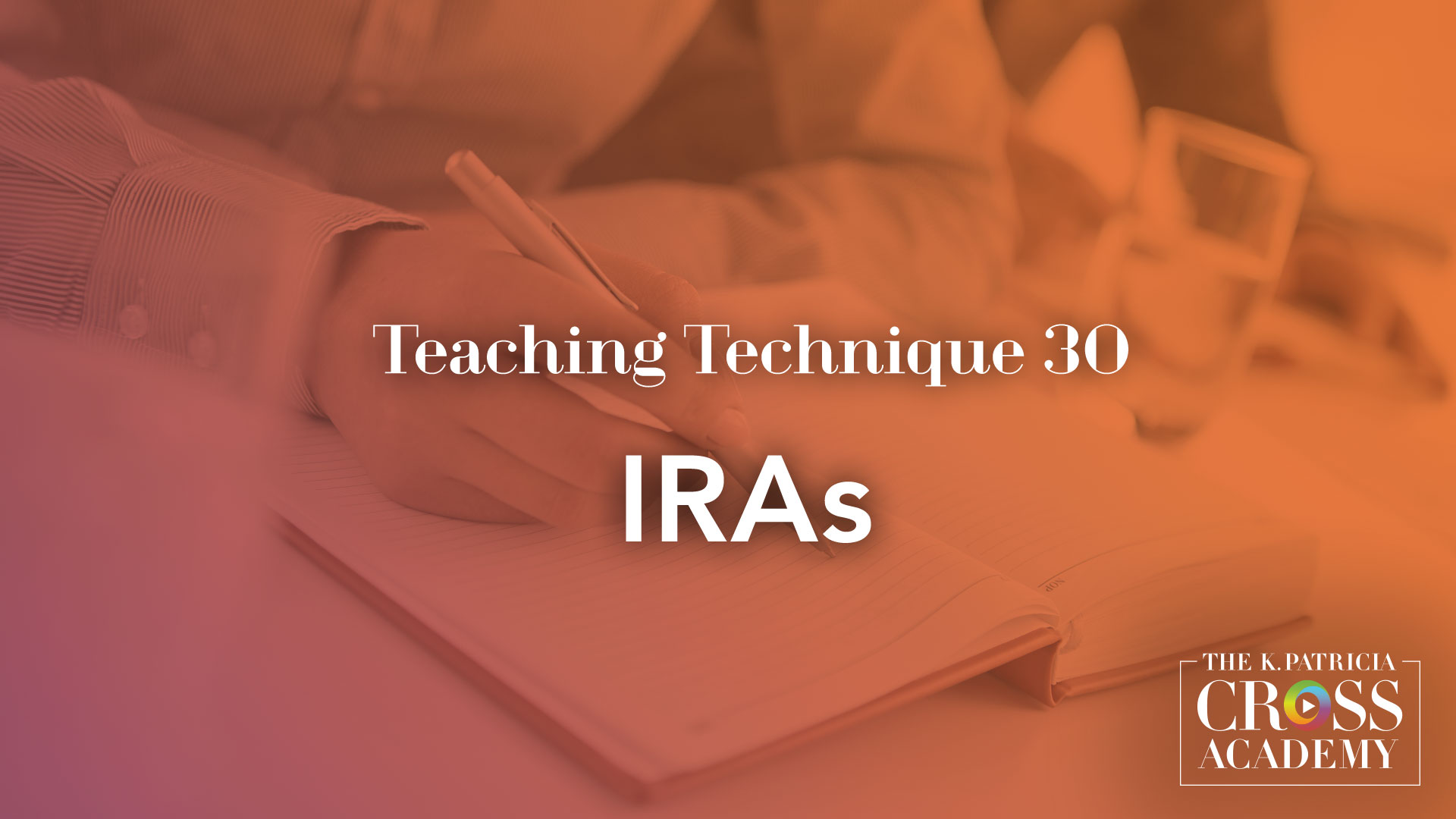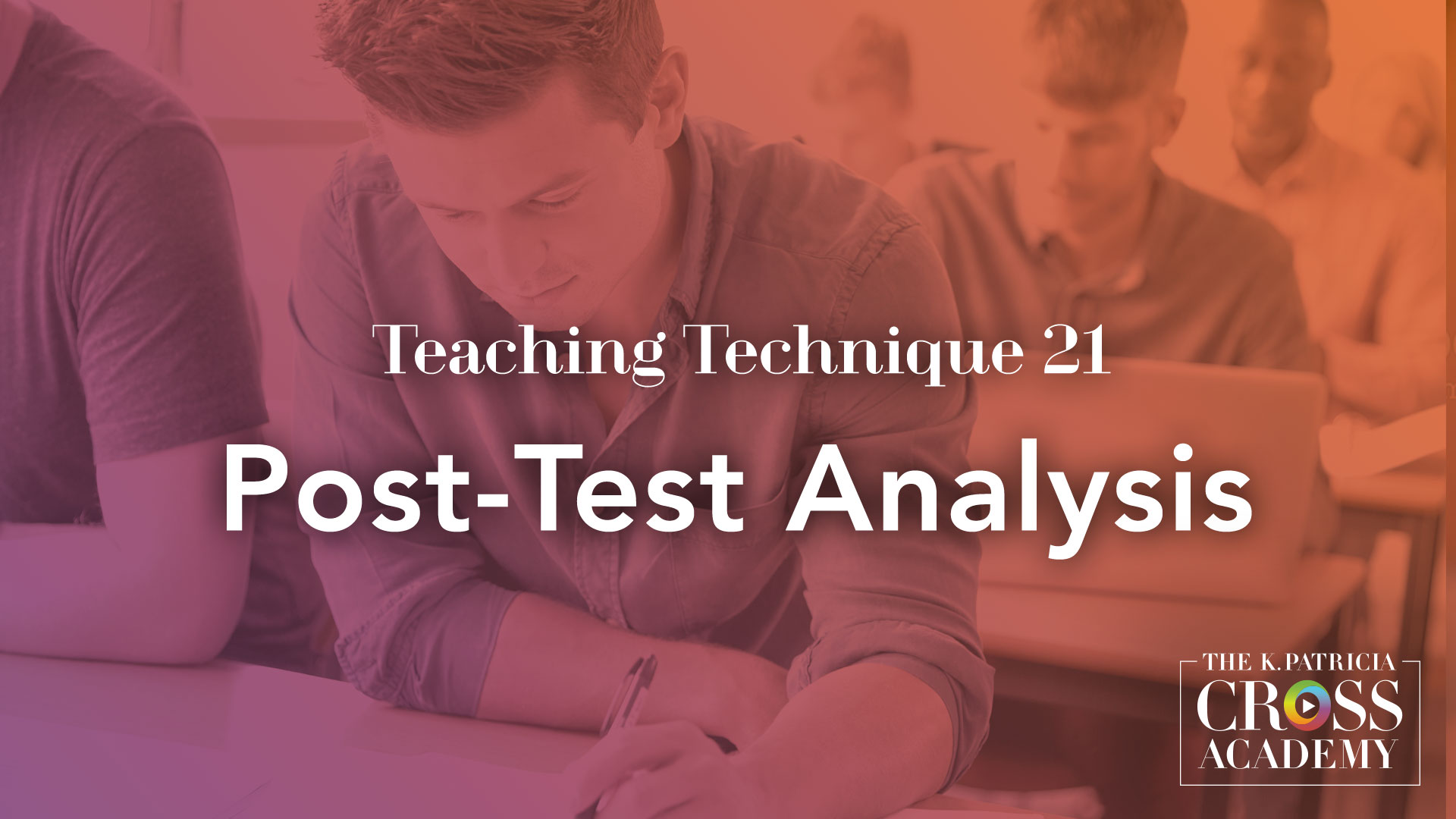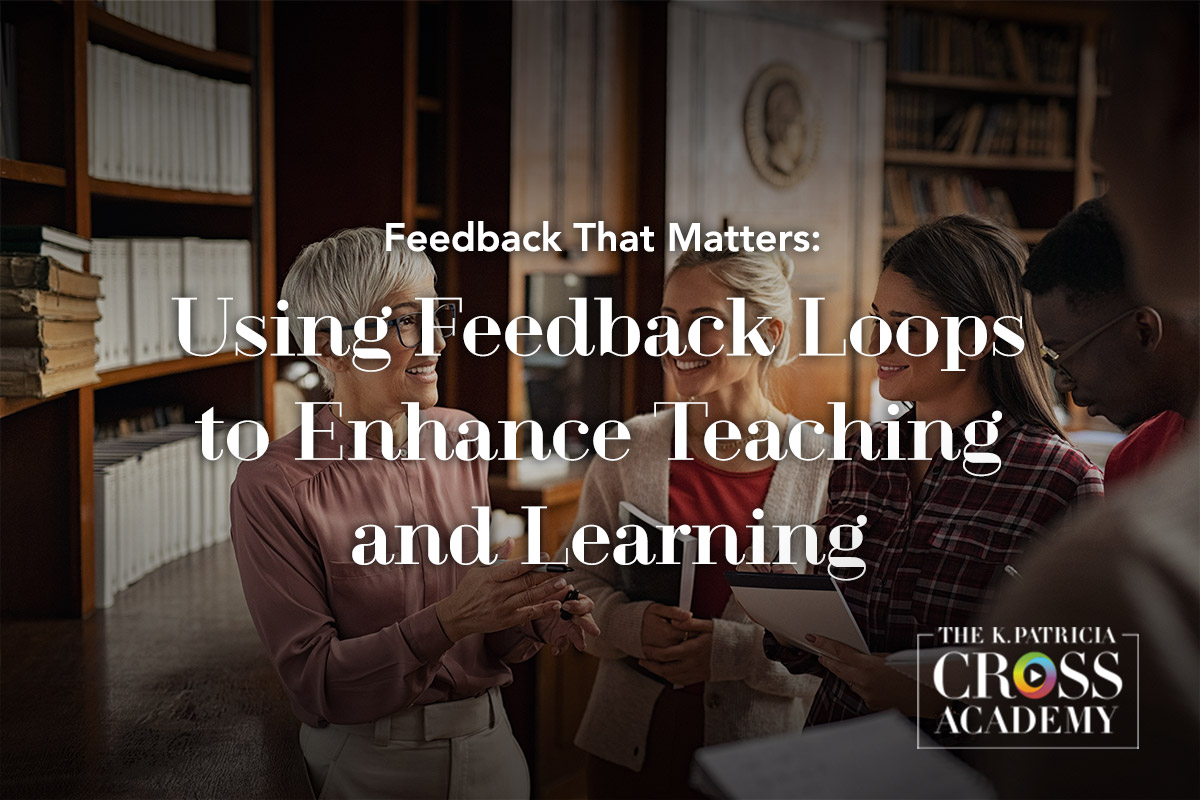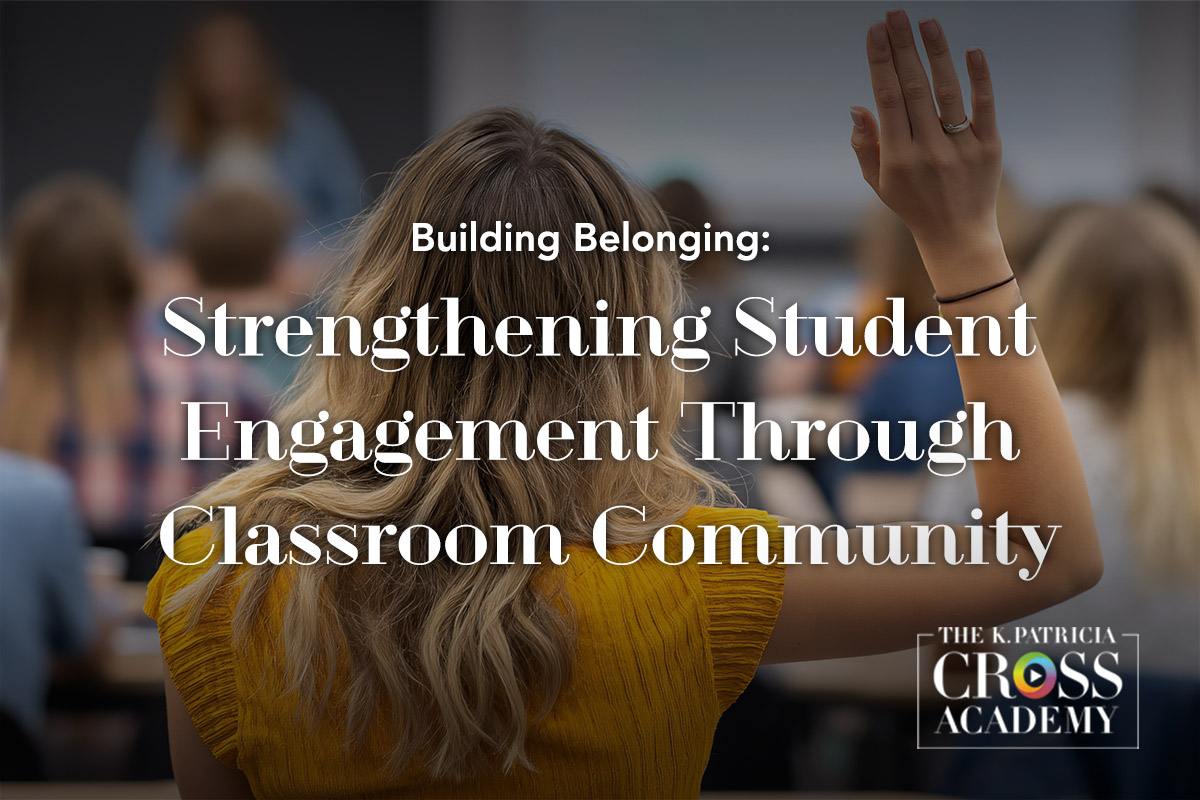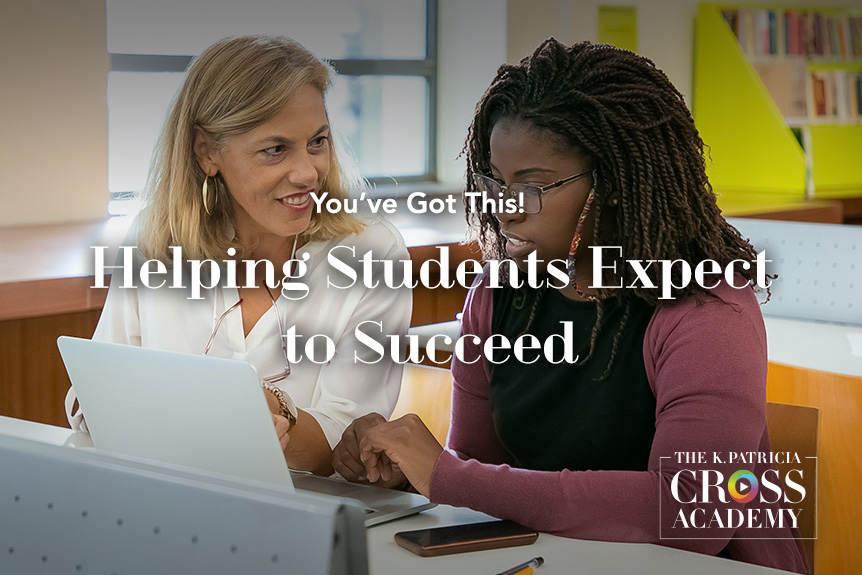
As Henry Ford once observed, “Whether you think you can or think you can’t, you’re right.” His perceptive remark neatly summarizes an important principle that applies to teaching. According to expectation theory, students must believe they can succeed in order to do so. This idea is supported by Dweck’s (2006) concept of Fixed vs. Growth Mindsets. Dweck describes the two distinct mindsets as follows:
- The Fixed Mindset
Believing that your qualities are carved in stone — the fixed mindset — creates an urgency to prove yourself over and over. If you only have a certain amount of intelligence, a certain personality, and a certain moral character — well, then you’d better prove that you have a healthy dose of them. It simply wouldn’t do to look deficient in these most basic characteristics. (p. 6) - The Growth Mindset
In this [growth] mindset, the hand you’re dealt is just the starting point for development. This growth mindset is based on the belief that your basic qualities are things you can cultivate through your efforts. Although people may differ in every which way — in their initial talents and aptitudes, interests, or temperaments — everyone can change and grow through application and exercise. (p. 7)
According to Dweck’s research, those with a fixed mindset avoid challenges, whereas those with a growth mindset embrace them. Participants with a fixed mindset viewed setbacks as defining them, whereas those with a growth mindset viewed them as an isolated event that can be overcome. Those with a fixed mindset viewed hard work as risky and possibly not worth the effort, whereas those with a growth mindset viewed work as meaningful and conducive to improvement and gain. It is not surprising that when students believe that if they put in the effort they will become smarter and they recognize that their exertions have an effect on their success, they are more willing to put in additional time. This will likely ultimately help them to achieve more.
Those with a fixed mindset viewed hard work as risky and possibly not worth the effort, whereas those with a growth mindset viewed work as meaningful and conducive to improvement and gain.
There have been criticisms of Dweck’s work, primarily since the findings, while significant, were supported by small effect sizes. However, even though this work may not result in a revolution in education and learning, it has significance to those of us who are in the trenches teaching every day. Moreover, Dweck’s findings are aligned with other theories of expectancy, self-efficacy, and so forth. The principle is simple: if students expect that their efforts will help them succeed, then they will put in the effort that makes them more likely to succeed.
Main Idea
If students expect to succeed, they are more likely to actually succeed.
Consider the following suggestions for encouraging students to adopt a growth mindset if you believe that encouraging a growth mindset could aid student learning (adapted from Briggs, 2020).
Help students to:
- recognize and accept their imperfections. Students must identify their own weaknesses in order to overcome them.
- consider obstacles as opportunities. Demonstrate to students how challenging material and assignments can offer opportunities for self-improvement.
- try various learning strategies. Suggest that students can experiment with various learning or study strategies until they find one that they believe works and that they feel they can stick with.
- prioritize the process over the outcome. Sometimes the process is the most important aspect of an assignment, perhaps even more so than the correct answer. Encourage students to display their work and offer some credit for their efforts.
- develop a sense of direction. According to Dweck’s research, students with a growth mindset have a stronger sense of purpose. Encourage students to maintain a broad perspective.
- prioritize growth over speed. Remind students that learning quickly is not synonymous with learning well, and that sometimes learning well requires allowing time for mistakes.
- understand that actions, not personal qualities, are praised. Tell students when they are doing something intelligent, not just when they are intelligent.
- accept criticism as constructive. Assist them in understanding that your feedback is intended to aid their development and not to punish.
- reflect. Provide ample opportunities for students to reflect on their learning.
- learn from the errors of others. It is not always a good idea to compare yourself to others, but it can be beneficial to recognize that all humans share certain weaknesses. Provide students with opportunities to share their mistakes and encourage them to learn from each other.

One of the fundamental ways in which teachers can help students anticipate course success is by ensuring that learning activities and assessment strategies promote success through clear organization, an appropriate level of difficulty, scaffolding of complex tasks, communication of standards, and equitable grading. In addition to these conditions, an important way to foster students’ success expectations is to teach them to attribute their success to their own perseverance and effort. You can assist students in recognizing the connection between effort and outcome in a number of ways:
- Demonstrate the relationship between effort and outcome by verbalizing your thoughts as you perform tasks. Show students that even for you, learning takes time and may involve confusion or errors. Express confidence that students will eventually succeed if they continue working carefully and thoughtfully, searching for better strategies, or acquiring more knowledge.
- Consider informing students that differences in success are largely attributable to differences in experience: students with more experience with a particular task typically have a greater understanding of how to complete the task effectively.
- Explain that even in subjects such as math, writing, and the arts that are conventionally viewed as ability-based, students can learn strategies and acquire the necessary knowledge to succeed. Assure students that, in order to gain the necessary experience, they must be tolerant of errors.
- When providing feedback, emphasize the relationship between effort and outcome by acknowledging students’ progress and the accomplishments they’ve attained as a result of their efforts.
- Ask current or former students to share successes. Consider having students submit their tips at the end of the course and attach a compiled, synthesized list of tips to the next term’s syllabus.
Example
A statistics professor knew that many of her students were concerned about their ability to be successful in her class. She invited former students who had also struggled with the same lack of confidence at the beginning of the term, but who ultimately achieved success, to share their "tips for success" with current students. They talked to the class and explained how they, too, had been extremely nervous at first. The former students then assured the current students that if they had been able to do well in the class, the new students could also do well. The current students were also invited to ask questions. After the visit of the former students, the current students felt more comfortable and with greater expectations of success.
The best way to lead students to expect success is to structure the course so that they can succeed, and then demonstrate throughout the course that they will succeed if they work hard and persist even when the going gets tough.
What are some Cross Academy Techniques that can help students expect to succeed?
Here are some example Cross Academy Techniques that can help students expect to succeed, in part by helping them monitor their own level of understanding:
Individual Readiness Assurance Tests are closed-book quizzes that students complete after an out-of-class reading, video, or other homework assignment.
A Lecture Wrapper is a tool for teaching students self-monitoring behavior as they identify key points from a lecture and then compare their points to the instructor’s list of points.
A Post-Test Analysis is a two-stage process that is divided into several steps designed to help students develop greater awareness of their test-preparing and test-taking skills.
Key Reference and Resources
Barkley, E. F., & Major, C. H. (2020). Student engagement techniques: A handbook for college faculty. (2nd ed). Jossey Bass/Wiley.
Briggs, S. (2020, December 16). 25 ways to develop a growth mindset. Open Colleges. https://www.opencolleges.edu.au/informed/features/develop-a-growth-mindset/
Dweck, C. S. (2006). Mindset: The new psychology of success. Random House.
McMillan, J. H., & Forsyth, D. R. (1991). What theories of motivation say about why learners learn. In R. J. Menges and M. D. Svinicki (eds.), College Teaching: From Theory to Practice, New Directions for Teaching and Learning, 45. Jossey-Bass.
Suggested Citation
Barkley, E. F., & Major, C. H. (n.d.). You’ve got this! Helping students expect to succeed. CrossCurrents. https://kpcrossacademy.ua.edu/youve-got-this-helping-students-expect-to-succeed/
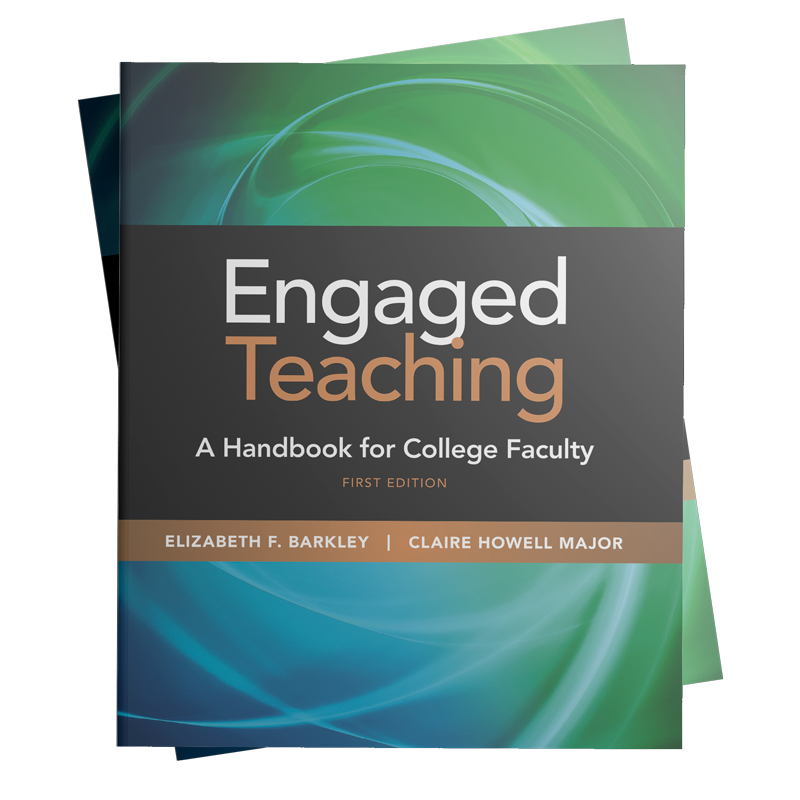
Engaged Teaching
A Handbook for College Faculty
Available now, Engaged Teaching: A Handbook for College Faculty provides college faculty with a dynamic model of what it means to be an engaged teacher and offers practical strategies and techniques for putting the model into practice.
